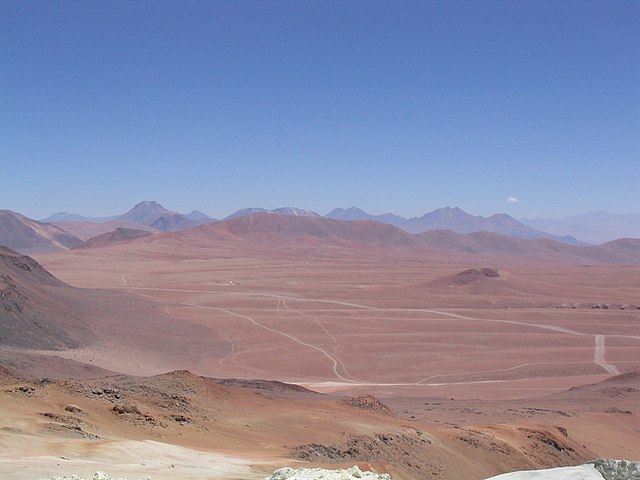Llano de Chajnantor Observatory
Llano de Chajnantor Observatory is the name for a group of astronomical observatories located at an altitude of over 4,800 m (15,700 ft) in the Atacama Desert of northern Chile. The site is in the Antofagasta Region approximately 50 kilometres (31 mi) east of the town of San Pedro de Atacama. The exceptionally arid climate of the area is inhospitable to humans, but creates an excellent location for millimeter, submillimeter, and mid-infrared astronomy. This is because water vapour absorbs and attenuates submillimetre radiation. Llano de Chajnantor is home to the largest and most expensive astronomical telescope project in the world, the Atacama Large Millimeter Array (ALMA). Llano de Chajnantor and the surrounding area has been designated as the Chajnantor Science Reserve by the government of Chile.
Llano de Chajnantor Observatory
360-degree panorama of the Chajnantor plateau
The Atacama Large Millimeter Array (ALMA)
The Atacama Pathfinder Experiment (APEX), a new-technology 12-m telescope in operation since 2005 on Llano de Chajnantor
An observatory is a location used for observing terrestrial, marine, or celestial events. Astronomy, climatology/meteorology, geophysics, oceanography and volcanology are examples of disciplines for which observatories have been constructed. Historically, observatories were as simple as containing an astronomical sextant or Stonehenge.
The Sphinx Observatory on a mountain top in the Swiss Alps at 3,571 m (11,716 ft)
Atacama Large Millimeter Array, Chile, at 5,058 m (16,594 ft)
Paranal Observatory, Chile, home of the VLT at 2,635 m (8,645 ft)
The Mauna Kea Observatories, Hawaii, home of several of the world's largest optical telescopes at 4,205 m (13,796 ft)








